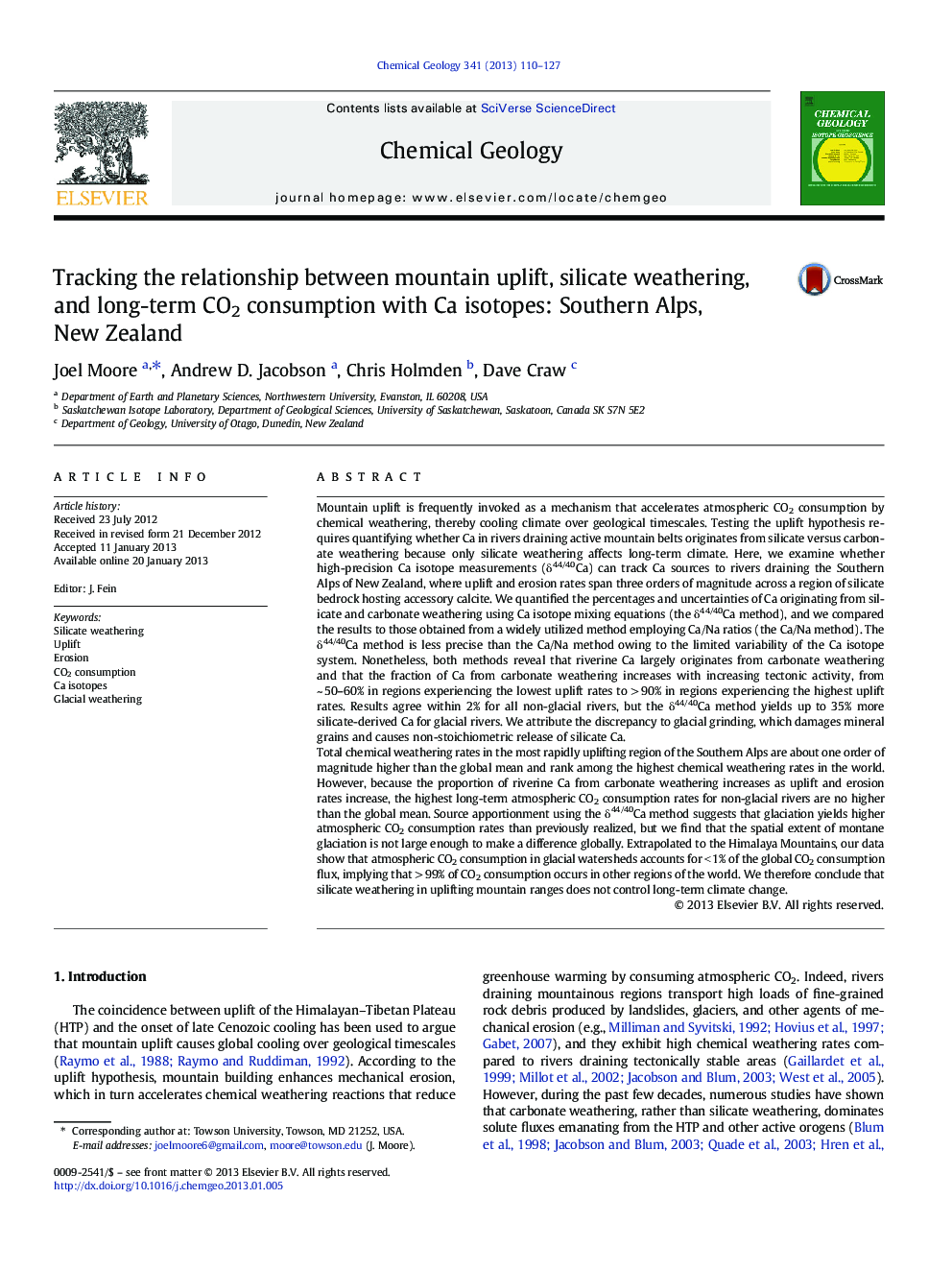| Article ID | Journal | Published Year | Pages | File Type |
|---|---|---|---|---|
| 4699045 | Chemical Geology | 2013 | 18 Pages |
Mountain uplift is frequently invoked as a mechanism that accelerates atmospheric CO2 consumption by chemical weathering, thereby cooling climate over geological timescales. Testing the uplift hypothesis requires quantifying whether Ca in rivers draining active mountain belts originates from silicate versus carbonate weathering because only silicate weathering affects long-term climate. Here, we examine whether high-precision Ca isotope measurements (δ44/40Ca) can track Ca sources to rivers draining the Southern Alps of New Zealand, where uplift and erosion rates span three orders of magnitude across a region of silicate bedrock hosting accessory calcite. We quantified the percentages and uncertainties of Ca originating from silicate and carbonate weathering using Ca isotope mixing equations (the δ44/40Ca method), and we compared the results to those obtained from a widely utilized method employing Ca/Na ratios (the Ca/Na method). The δ44/40Ca method is less precise than the Ca/Na method owing to the limited variability of the Ca isotope system. Nonetheless, both methods reveal that riverine Ca largely originates from carbonate weathering and that the fraction of Ca from carbonate weathering increases with increasing tectonic activity, from ~ 50–60% in regions experiencing the lowest uplift rates to > 90% in regions experiencing the highest uplift rates. Results agree within 2% for all non-glacial rivers, but the δ44/40Ca method yields up to 35% more silicate-derived Ca for glacial rivers. We attribute the discrepancy to glacial grinding, which damages mineral grains and causes non-stoichiometric release of silicate Ca.Total chemical weathering rates in the most rapidly uplifting region of the Southern Alps are about one order of magnitude higher than the global mean and rank among the highest chemical weathering rates in the world. However, because the proportion of riverine Ca from carbonate weathering increases as uplift and erosion rates increase, the highest long-term atmospheric CO2 consumption rates for non-glacial rivers are no higher than the global mean. Source apportionment using the δ44/40Ca method suggests that glaciation yields higher atmospheric CO2 consumption rates than previously realized, but we find that the spatial extent of montane glaciation is not large enough to make a difference globally. Extrapolated to the Himalaya Mountains, our data show that atmospheric CO2 consumption in glacial watersheds accounts for < 1% of the global CO2 consumption flux, implying that > 99% of CO2 consumption occurs in other regions of the world. We therefore conclude that silicate weathering in uplifting mountain ranges does not control long-term climate change.
► We use Ca isotopes to apportion riverine Ca between carbonate and silicate sources. ► Proportion of carbonate Ca increases as uplift and erosion rates increase. ► Proportion of silicate Ca in glacial rivers may be higher than previously realized. ► Highest long-term atmospheric CO2 consumption rates no higher than global mean. ► Uplift-induced changes to silicate weathering insufficient to impact global climate.
